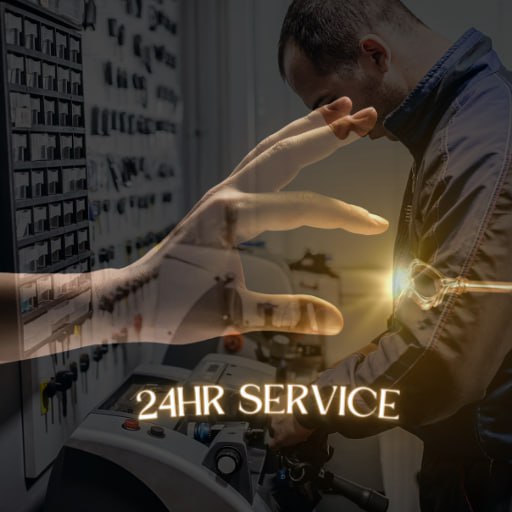Lock picking is an art and a science that has intrigued many throughout history. From the classic stories of thieves and detectives to modern-day locksmiths and security experts, mastering lock picking techniques has become essential for various reasons. Whether you're a curious hobbyist or a professional locksmith, understanding the intricacies of lock systems can empower you to unlock doors—both literally and metaphorically. In this comprehensive guide, we'll delve into the world of lock picking techniques, why they matter, and how they relate to the services provided by locksmiths in Wallsend.
What Are Lock Picking Techniques?
Lock picking techniques involve manipulating the components of a lock to open it without using the original key. These methods are primarily used by locksmiths and security professionals but can also be employed by those seeking unauthorized access to locked areas, hence the importance of understanding these techniques from both ethical and practical standpoints.
Types of Locks Commonly Picked
Pin Tumbler Locks: The most common type found in residential settings. Wafer Locks: Typically used in filing cabinets and some vehicles. Disc Detainer Locks: Often seen in high-security applications. Tubular Locks: Frequently used for vending machines and bike locks.Understanding these types of locks is vital for anyone looking to learn about lock picking, especially for locksmiths in Wallsend who encounter different locking mechanisms daily.
Why Do Lock Picking Techniques Matter?
Understanding lock picking techniques is crucial for several reasons:
- Security Assessment: Knowing how locks function allows locksmiths and security experts to assess vulnerabilities in existing security systems. Emergency Response: Emergency locksmiths in Wallsend often need to pick locks quickly during crises such as locked-in children or lost keys. Craftsmanship: For those pursuing a career as a locksmith, mastering these skills enhances their service offerings.
In essence, knowledge about lock picking equips individuals with tools necessary for effective problem-solving in everyday situations.
Historical Context of Lock Picking Techniques
The art of lock picking dates back thousands of years. Ancient civilizations utilized primitive forms of locks made from wood or metal that could be manipulated with simple tools. Over time, as technology advanced, so did locking mechanisms—leading to more complex designs requiring refined techniques for unlocking them.

Evolution of Lock Technology
- Early Mechanical Locks Introduction of Combination Locks Development of Electronic Locks
Each advancement brought unique challenges for both manufacturers and those wishing to bypass these security measures.
The Basic Principles Behind Lock Picking
To effectively pick locks, one must understand the fundamental principles governing their operation.
Components of a Pin Tumbler Lock
Key Pins Driver Pins Spring Mechanisms Plug & CylinderUnderstanding Pin Interactions
When a key is inserted into a pin tumbler lock, its unique cuts align the pins at the shear line—allowing freedom of locksmith wallsend rotation within the cylinder. A skilled individual can replicate this action without the original key through careful manipulation.

Essential Tools for Lock Picking
A variety of tools exist specifically designed for lock picking:
1. Picks
- Hook Picks Rake Picks
2. Tension Wrenches
Used to apply rotational pressure on the plug while manipulating pins inside.
3. Bump Keys
A specially crafted key that can "bump" pins into alignment when struck.
Knowing how each tool functions contributes significantly to success rates when attempting to pick any given lock type.
Understanding Lock Picking Techniques (And Why They Matter) in Practice
Now that we’ve covered theoretical aspects let’s delve into practical applications—learning various techniques effectively!
1. Single Pin Picking (SPP)
This precise method involves manipulating one pin at a time until all are set at the shear line.
Steps:
- Insert tension wrench into bottom part of keyway. Apply light pressure while using a pick on each pin sequentially.
Mastering SPP requires patience but yields positive results with practice!

2. Raking Technique
Raking employs swift motions across multiple pins simultaneously—ideal for inexperienced pickers or certain types like low-security locks.
Steps:
- Insert rake pick into keyway. Apply tension with wrench while moving rake back-and-forth rapidly across pins.
This technique may not work on high-security locks due to additional layers safeguarding them!
Common Challenges Faced When Learning Lock Picking
While learning these techniques can be rewarding, it's not without its challenges:
1. Complex Lock Designs
Choosing higher-end models often complicates matters due to advanced mechanisms requiring specialized knowledge or tools beyond basic picks/rakes alone.
2. Legal Risks
Engaging in unauthorized entry poses legal consequences; thus understanding local laws regarding possession/use is paramount before experimentation begins!
Ethics Surrounding Lock Picking Techniques
It's essential we address ethics here because knowledge carries responsibility!
Should You Learn To Pick Locks?
Absolutely—but only if done responsibly! Many legitimate uses exist such as:
- Assisting locked-out individuals Enhancing personal security measures
Conversely though engaging illicitly could lead down dangerous paths both legally & morally speaking… think wisely about intentions behind your skills!
When To Call A Professional Locksmith?
Sometimes DIY attempts aren’t feasible; knowing when it’s time to seek help saves frustration (and potential damage). Here are signs indicating professional intervention might be required:
Persistent Locked Door Issues Key Broken Inside Cylinder High-Security Systems Beyond Your ExpertiseIn Wallsend specifically seeking seasoned professionals ensures peace-of-mind knowing trained hands handle delicate scenarios efficiently!
FAQs About Lock Picking Techniques
Q1: Is it illegal to possess lock-picking tools?
A1: Possession laws vary by location; always check local regulations before acquiring any tools related directly or indirectly towards this activity!
Q2: Can I learn lock picking myself?
A2: Yes! Numerous resources exist including books/videos designed explicitly around teaching newcomers foundational skills needed for success over time!
Q3: What should I do if I’m locked out?
A3: Try contacting emergency locksmith services available nearby (like those operating within Wallsend); they’ll respond swiftly ensuring access restored safely without risk damaging property unnecessarily!
Q4: How long does it take to learn lock picking?
A4: Learning curves differ per individual; however regular practice combined with guidance accelerates mastery significantly compared solely trying alone intermittently instead!
Q5: Are there legitimate uses for lock picking?
A5: Absolutely! Security assessments & assisting people locked out are just two examples showcasing practical applications benefiting society overall positively enhancing safety standards generally accepted today too!
Q6: What’s the best beginner toolset for learning?
A6: A basic set including tension wrenches plus assorted picks would suffice initially until you determine preferences based upon experiences gained through experimentation later-on down-the-line too perhaps!
Conclusion
In summary, understanding lock picking techniques opens doors—not just physically but also metaphorically—in terms technological advances shaping our lives today further enriching experiences shared among communities everywhere including surrounding areas like Wallsend where dedicated professionals ensure safety remains paramount amidst evolving threats present constantly faced daily still needing addressing effectively going forward collaboratively together henceforth onward always striving improvement continuously progressing ever deeper exploring realms unknown inevitably discovering new heights previously thought unreachable ultimately making impact felt far beyond immediate surroundings likely experiencing transformations unfold visibly around us leading brighter futures ahead together united stronger than ever before achieving greatness collectively standing tall resolutely shining brightly illuminating paths forward guiding others along journeys undertaken hand-in-hand tirelessly relentlessly forging ahead determined unwavering until goals achieved finally realized dreams finally fulfilled completely uniting everyone involved harmoniously creating lasting legacies cherished forever after!